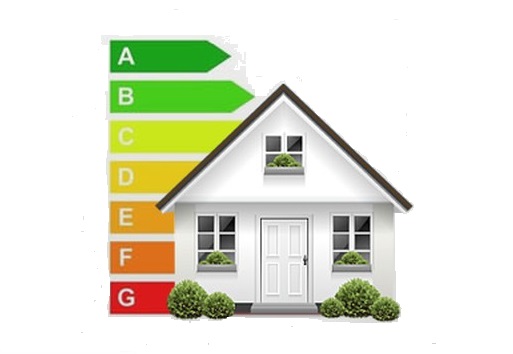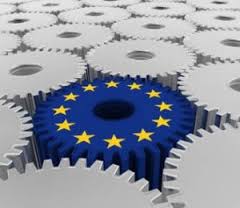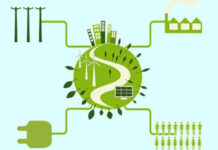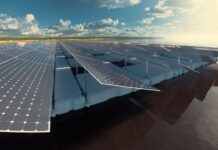
What are inactive houses constructive features?
Inactive buildings aren’t different from traditional ones, because inactive describes a standard, not an architectonic codification. More broadly, an inactive building (even a inactive house) assures comfort high level with nearly zero energy consumption’s (nearly Zero Energy Building, shortly nZEB).
To be more technical, most important features are: thermal insulation’s very high level; low emission triple-glass insulated windows frameworks; buildings without thermal bridges; buildings casings with air and wind high hold; comfortable ventilation with high efficiency heat restoration.
Talking about “inactive” constructions or better “active” –now we should change the term with this-, so, means renewing constriction industry laying people and positive dwelling experience at the heart, where “well-being” changes spaces into a sort of individual extension.
Therefore we’ll have energy zero consumption buildings, zero emissions in the atmosphere, zero0 waste production in the ambient, zero inefficiencies and zero discomfort: is the new “0.0 buildings” concept, as we call it at Aakon.
Everyone can see the reduced development’s building, how inactive houses’ construction can raise sector again?
Construction market’s in undeniable difficulty. However we can’t wait for something to happen from outside to change this incessant negative trend. Innovation has to come from inside, from the all construction’s industry. This innovation has to start from a new quality standard, waited and pretended by the market itself. Life quality, otherwise specific living quality. Beyond consumptions, comfort is the added value: “well-living”. In addition to this we combine other separated but, at the same time, interrelated elements, representing deepest experience and emotion’s hearth given and delivered to people from living.
Sustainability is central in new real estate market’s request too. Sustainable may have many senses. From price to living quality. Spaces’ social trait, obviously environmental and people health respect, but above all, the respect of any regeneration or new construction’s project should have to guarantee an activity’s virtuous life cycle, looking for an efficient circular economy.
Inactive, or active as we can say, buildings’ construction in industrial perspective is effective, and safe, answer to ones waiting for this tired market’s relaunch.
What does industrializing in building mean and why this process fosters constructions’ green impact?
Nowadays construction is the less industrialized market we know. We trust too much in planning systems that I call “fragmented” when they don’t improvise and conclude along the way in construction site. Why don’t you ask yourself why in Italy project important American offices don’t get by? I think the reason’s easy: in this country real estate investor doesn’t want to pay industrialized planning, and settles for low quality product, often relying on artisan workers and very small size companies.
It’s necessary, instead, thinking to a industrial develop product getting more and more HI-LO (Hi performance – Low Cast). This needs a cultural change gradually bringing to a “holistic industrializing project” of entire building construction and manufacturing supply chain.
From holistic point of view, parts’ functional summation is always bigger/different from piece by piece performances total. This precept take scare of any industrial project to realize manufacturing big works like cars, smart phones rather than suits’ collection. Production’s procedures used a lot even in building supply chain. In Italy nowadays real construction brands similar approach’ able don’t exist.
Digitization will bring change in this sector too, therefore it’ll arise, unavoidably a new industrial supply chain’s stunning organization. This fact will change professions layout. We won’t have any more architects or the engineering office as we know by now, but specialized companies, like architects and engineers’ team, perfect cooperatively working with the designer (understood in German way, a bridge position between architect and engineer with pragmatic knowledge in physics, materials’ sciences and more e.n.) for architectural and engineering construction work realization’s, to tunefully blend design with technology.
Passwords in production’s control will be: interface, dashboard, test, autonomy and social. At the same time, growth and development will be tuned by words like staff on demand, community, crowd, algorithms or leveraged assets. Lastly I imagine construction industry branding bringing a virtuous process about care and in time reliability both regenerate and new built.
A real brand will intercept new commercial demand, offering, like automotive, high warranties, post-sale reliability, continuous maintenance capability and sustainable life cycles management. There will be a cultural share growth, more and more people oriented and eco friendly.
This is about new constructions, while how can we manage retrofit and what will we obtain?
Surely, in the most part with outcomes very close, sometimes even identical, to new’ performances. When you think an earlier building burns average 10 times more of a new one, old buildings’ restoration is economically suitable and at the same time contributes to economic domestic dependence’ reduction from other countries’ energy import. That’s why we have to keep on supporting and subsidizing such interventions.
However, gathering benefits is complicated, both in private and in public, immediately because opening investment costs usually more than a traditional restoration having not important presumptions compared with performances. That’s the reason why It’s necessary to industrialize deeply retrofit’s intervention too, so reducing, in important way, time and price. This way wed support evident economic and environmental returns, about building all cycle life.
Is demolishing and rebuilding existing constructions possible according to this kind of buildings?
For me isn’t only thinkable but recommended every time is possible. Retrofit means demolishing and rebuilding too. If we’d increase performing constructions’ park under energy profile, we would input renewed structures’ produced energy in the network (so-named Energy-Plus).
It’s clear that technology’s this innovation basis, but without right choices and subsidy and support strategic policies of these visions, It won’t be possible to reach environmental, social and urban virtuous aims.
Are there some building limits in inactive constructions?
No, there are no limits. I mainly talked about buildings, not houses. It’s possible to realize inactive buildings, nZEB or better energy plus both residential and business, tertiary or industrial destination. Such buildings may assume desired dimension and architectural form, guaranteeing anti-seismic resistance, plant design safety, fire prevention and any other guarantee needed to realize totally human scale and its safety works.
Real limit would be continuing to realize buildings following a technological condition already old and passed like we did on average till now. Constructions cannot stay “looking at the window” while all the markets named before, keep on running vortically, using innovative technologies. So the real question is: “Real estate industry is ready to make this step?”; personally I think we can’t go very far with a future development different from building 0.0
Per ricevere quotidianamente i nostri aggiornamenti su energia e transizione ecologica, basta iscriversi alla nostra newsletter gratuita
e riproduzione totale o parziale in qualunque formato degli articoli presenti sul sito.


















